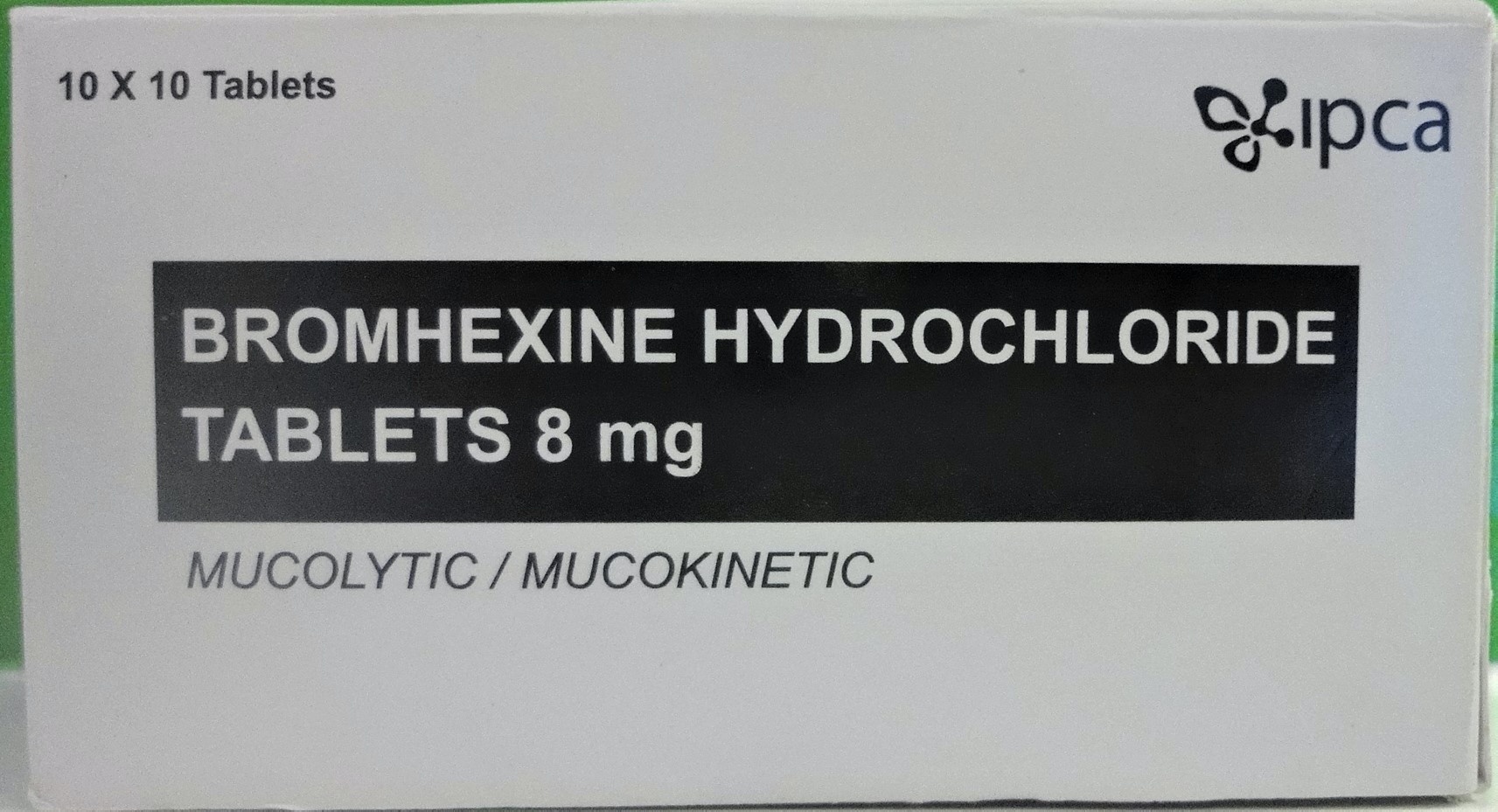BROMHEXINE HYDROCHLORIDE Tablet
ក្រុមហ៊ុនផលិតឱសថ:
Ipca Laboratories Ltd., India

- សារធាតុសកម្ម
- ប្រសិទ្ធិភាពព្យាបាល និង កម្រិតប្រើប្រាស់
- ហាមប្រើ
- ផលរំខាន
- ស្ត្រីមានផ្ទៃពោះ និង ស្ត្រីបំបៅដោះកូន
- ការប្រុងប្រយ័ត្នជាពិសេស
- សកម្មភាពឱសថ បរិយាយប័ណ្ណឱសថ
-
សារធាតុសកម្ម
-
ប្រសិទ្ធិភាពព្យាបាល និង កម្រិតប្រើប្រាស់
Bromhexine Hydrochloride creates an environment in the bronchial tree conductive to the removal of sticky mucus, thus promoting expectoration without excessive straining. Bromhexine Hydrochloride is valuable in those conditions of the upper and lower respiratory tract which are associated with retention of viscid mucoid secretions - e.g. Bronchitis, Asthma with or without Bronchitis, Bronchiectasis, Lung Abscess, Emphysematous Bronchitis, Pulmonary Tuberculosis, Industrial Pneumoconioses, Sino-bronchial syndrome (sinusitis complicating bronchitis and vice versa), Bromhexine Hydrochloride should be supplemented with appropriate therapeutic measures for treating infection or bronchospasm, whenever necessary.
Dosage and Administration
Adults: 1-2 tablets 3-4 times daily depending on the severity or chronicity of clinical condition.
Children (5-10 years): 1/2 tablet 4 times daily.
Children (under 5 years): 1/2 tablet twice daily.
-
ហាមប្រើ
There are no absolute contra-indications to the use of Bromhexine-Hydrochloride.
-
ផលរំខាន
BROMHEXINE
Central Nervous System Effects: Dizziness and headache have been associated with bromhexine therapy in some patients. Dizziness has responded to dose reduction.
Gastrointestinal Effects: Nausea, epigastric pain, vomiting, and diarrhea have been reported occasionally during bromhexine therapy. Although infrequent, these adverse effects have necessitated withdrawal of therapy in some patients.
Kidney/Genitourinary: Enuresis (with or without diarrhea) necessitated discontinuation of bromhexine therapy in 3% of children with otitis media in 1 study. However, it is unclear if this effect was definitely attributable to bromhexine.
Liver: Transient elevations in serum aspartate aminotransferase (SGOT) levels have been described infrequently on bronchial glands as opposed to hepatic dysfunction.
Skin: Rarely, skin rash has been reported in bromhexine-treated patients.
There have been no reports of overdosage with Bromhexine Hydrochloride.
-
ស្ត្រីមានផ្ទៃពោះ និង ស្ត្រីបំបៅដោះកូន
Animal studies have not revealed any teratogenic potential of Bromhexine Hydrochloride but its use in the first trimester of pregnancy should be avoided.
-
ការប្រុងប្រយ័ត្នជាពិសេស
Patients with a history of gastric ulceration should be carefully assessed and observed during Bromhexine Hydrochloride treatment.
-
សកម្មភាពឱសថ
Bromhexine Hydrochloride has been administrated to have simultaneous physiological and biochemical role in actively aiding expectoration.
Bromhexine Hydrochloride, firstly, increases sputum volume by stimulating the mucous glands of the respiratory tract and by, promoting ciliary clearance of sputum.
Bromhexine Hydrochloride, further, reduces sputum viscosity by breaking down the tenacious network of acid mucopolysaccharide fibres that abound in mucoid spupum and which are mainly responsible for sputum stickiness.
*ព័ត៌មានឱសថត្រូវបានរៀបរៀងដោយ អ៊ីម៉ាតុគឹ មេឌីក (ខេមបូឌា) ដោយផ្អែកលើប្រភពព័ត៌មានខាងក្រោម។ សម្រាប់ព័ត៌មានលម្អិត សូមស្វែងរកនៅក្នុងក្រដាសព័ត៌មាននៃឱសថនីមួយៗ ឬ សាកសួរទៅកាន់ក្រុមហ៊ុនឱសថឬតំណាងចែកចាយនៃឱសថនីមួយៗ។
ប្រភពព័ត៌មាន៖
- ក្រដាសព័ត៌មាននៃឱសថសម្រាប់អ្នកជំនាញវេជ្ជសាស្ត្រដែលប្រើប្រាស់នៅប្រទេសជប៉ុន (Pharmaceutical and Medical Devices Agency, Pmda): https://www.pmda.go.jp
- ព័ត៌មានសង្ខេបនៃឱសថសម្រាប់អ្នកជំងឺដែលប្រើប្រាស់នៅប្រទេសជប៉ុន: http://www.rad-ar.or.jp
